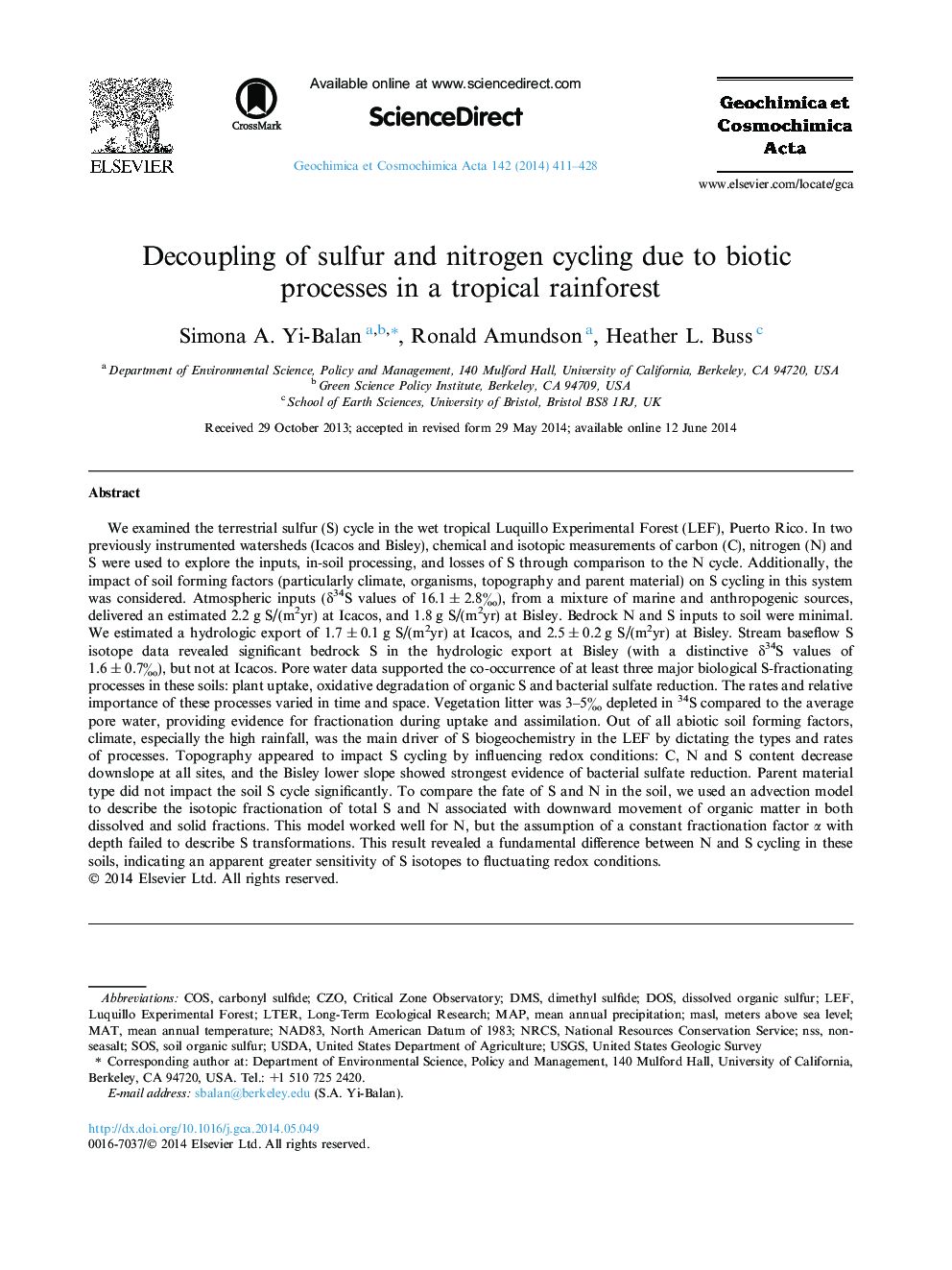| Article ID | Journal | Published Year | Pages | File Type |
|---|---|---|---|---|
| 6438471 | Geochimica et Cosmochimica Acta | 2014 | 18 Pages |
Abstract
We examined the terrestrial sulfur (S) cycle in the wet tropical Luquillo Experimental Forest (LEF), Puerto Rico. In two previously instrumented watersheds (Icacos and Bisley), chemical and isotopic measurements of carbon (C), nitrogen (N) and S were used to explore the inputs, in-soil processing, and losses of S through comparison to the N cycle. Additionally, the impact of soil forming factors (particularly climate, organisms, topography and parent material) on S cycling in this system was considered. Atmospheric inputs (δ34S values of 16.1 ± 2.8â°), from a mixture of marine and anthropogenic sources, delivered an estimated 2.2 g S/(m2yr) at Icacos, and 1.8 g S/(m2yr) at Bisley. Bedrock N and S inputs to soil were minimal. We estimated a hydrologic export of 1.7 ± 0.1 g S/(m2yr) at Icacos, and 2.5 ± 0.2 g S/(m2yr) at Bisley. Stream baseflow S isotope data revealed significant bedrock S in the hydrologic export at Bisley (with a distinctive δ34S values of 1.6 ± 0.7â°), but not at Icacos. Pore water data supported the co-occurrence of at least three major biological S-fractionating processes in these soils: plant uptake, oxidative degradation of organic S and bacterial sulfate reduction. The rates and relative importance of these processes varied in time and space. Vegetation litter was 3-5â° depleted in 34S compared to the average pore water, providing evidence for fractionation during uptake and assimilation. Out of all abiotic soil forming factors, climate, especially the high rainfall, was the main driver of S biogeochemistry in the LEF by dictating the types and rates of processes. Topography appeared to impact S cycling by influencing redox conditions: C, N and S content decrease downslope at all sites, and the Bisley lower slope showed strongest evidence of bacterial sulfate reduction. Parent material type did not impact the soil S cycle significantly. To compare the fate of S and N in the soil, we used an advection model to describe the isotopic fractionation of total S and N associated with downward movement of organic matter in both dissolved and solid fractions. This model worked well for N, but the assumption of a constant fractionation factor α with depth failed to describe S transformations. This result revealed a fundamental difference between N and S cycling in these soils, indicating an apparent greater sensitivity of S isotopes to fluctuating redox conditions.
Keywords
Related Topics
Physical Sciences and Engineering
Earth and Planetary Sciences
Geochemistry and Petrology
Authors
Simona A. Yi-Balan, Ronald Amundson, Heather L. Buss,
